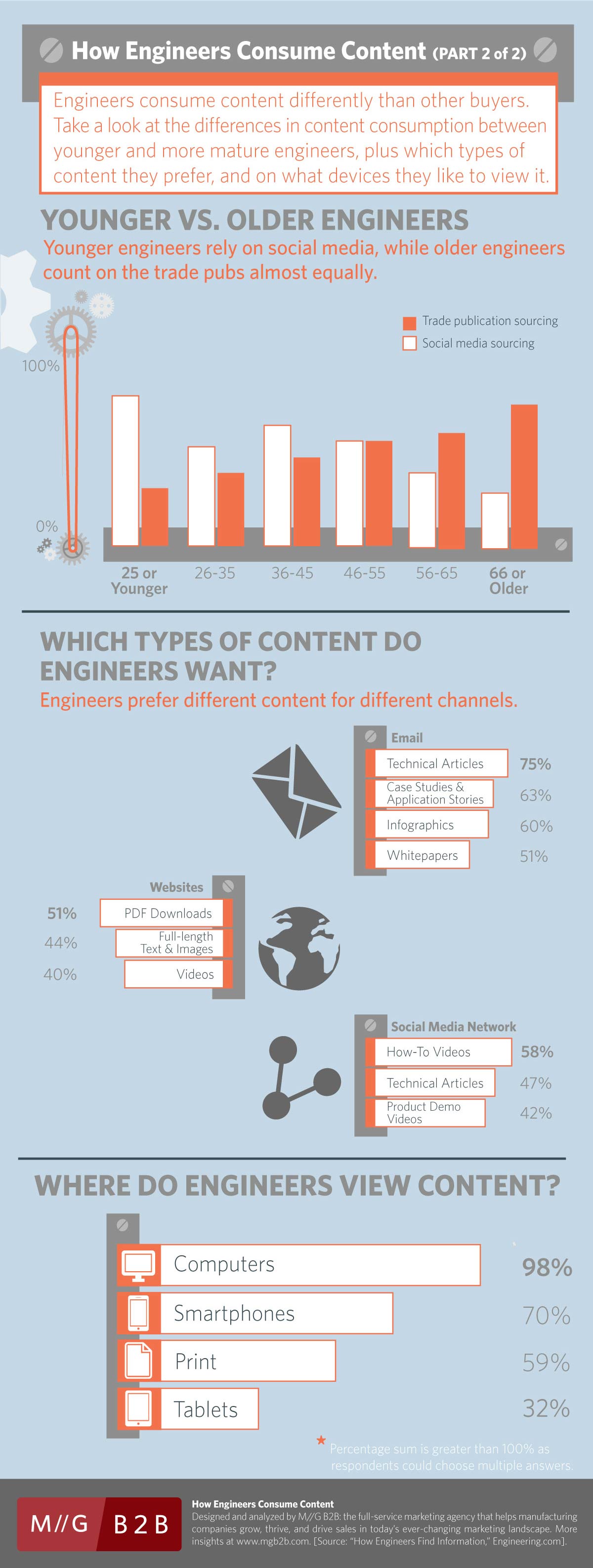Building B2B Buyer Personas: 6 Key Questions to Ask
by MGB2B
Using Buyer Personas to Cut Marketing Waste
Is there a lot of waste in your company’s advertising? That is often the case for B2B brands. Your audience can flip past ads. They can scroll past banners. When you produce a general marketing campaign with one message to a broad audience, it can be overlooked by a good portion of the audience. Instead, arm yourself with targeted Buyer Personas. A Buyer Persona is a detailed profile of your ideal buyer. It usually includes demographic and psychographic information, media consumption, and purchasing behavior. Often, it’s necessary to do extensive market research (both qualitative and quantitative) to establish an effective Buyer Persona. And in most cases, you’ll want to create multiple buyer personas to target different verticals or decision makers.
Take a Look at These Key Areas to Investigate When Developing Buyer Personas:
- What Are the Demographics?
Before you dive into needs and wants, it’s crucial to establish a demographic profile for your Buyer Persona. Get to know the typical age, education, job title, and industry of your buyers. These all play a major role in who they are as a B2B decision maker. - What Are Your Buyers’ Goals?
It’s important to gain an understanding of what your Buyer Personas are looking to achieve on the job and what they need in order to be successful. The information you gather will help you to better understand how to help them achieve those goals. And you can create marketing content with these goals in mind. - What Do They Value Most?
Once you know their goals, you’ll want to identify the key attributes that drive a buyer’s decision-making process. Ease of use. Support. Price. Identify what your buyers value most. Then, you can use it to develop products and services they need and messaging that resonates. - What Are Their Pain Points?
This is one of the most important areas to identify for your Buyer Personas because it gets to the root of the benefit you can provide. When you know pain points, you can work to help your buyers overcome their most difficult challenges. Pain points are a great way to fuel both product and content development. They inspire fodder for blog posts, white papers, videos – you name it. - How Do They Feel About Your Competitors?
It’s not only critical to understand the demographic and psychographic profiles of your Buyer Personas. You also need to understand their relationship with your competitors. To get started, ask questions that help define your competitive landscape and identify holes in the marketplace that your brand can fill. - How Do They Like to Be Reached?
Lastly, once you’ve created detailed profiles of your Buyer Personas, it’s important to know the best way to reach them. Do they prefer face-to-face contact with your sales reps? Or is a monthly email their preferred means of staying updated? Do they like videos? Or follow brands they like on Facebook? With so many means of communication, you can get a leg up by allowing your Buyer Personas to identify where they are and what they’re looking for. It’s the best way to make sure your message gets through the clutter and directly to your target.
It may seem like a lengthy process to develop Buyer Personas. However, the reward of a streamlined, highly targeted marketing program is well worth it. You’ll see increased engagement and return on investment, as well as happier customers. After all, even B2B buyers like to receive helpful hints and content designed specifically for them, as opposed to a mass-market campaign that casts a wider net. And happy customers make for a happy brand.
Continue ReadingB2B Myth of the Week: Any Video Is a Good Video
by MGB2B
The Myth: Any Video Is Good Video
The Truth: Good Video Starts with Good Strategy
Video! Video! Video!
“Everyone wants video. We better get one made pronto!”
Sound familiar? It’s a sentiment echoing in conference rooms and boardrooms all across the country. Everyone knows that video is important because it’s what most customers like to consume.
But before you dive into the world of video, it’s important to determine a few things. You need to build a video strategy. Because not all videos are effective for every brand and every industry. Every company’s needs and goals are different. So the best way to get started is by asking yourselves – and possibly your customers – some key questions.
Here Are 6 Questions to Drive Strategy and Inspire B2B Video Ideas for Your Brand:
- What Kind of Video Do My Customers Want/Need? This is the most important question you can ask. Sure, everyone loves a good cat video. But what kind of video do your customers crave that is relevant to your brand or products. Presumably, you have a database. Send your people an incentivized survey. They’d be happy to tell you if they want to see product training videos, Q&A with an industry expert, or a simple whiteboard video with tips on certain types of projects. After all, these are the people you want to look at your videos. Why deliver them something generic when you can actually give them helpful insights that establish your brand as a thought leader?
- What Is the Purpose of the Videos We Are Creating? Developing video content without knowing why you’re doing it is a waste of money. Hence, it’s important to have clear goals in mind. Are you simply trying to build awareness of your brand? A factory tour or brand video might work best. Or do you want prospects to take some sort of action based on what they see? In this instance, you might want to use a video case study. By figuring out what you want to get out of the videos you create, you can be more effective. Plus, you’ll be able to measure your success to determine which types of videos you should create down the road.
- Are There Videos That Can Be Helpful Internally as Well as to a Broader Audience? Sometimes your internal salespeople or reps can use video to sell or train clients. Ask them what they would find helpful for closing a sale. Sometimes the answers to Questions 1 & 3 can result in a video that serves both purposes.
- What Resources Do We Have Access To? Do you have someone internally that can produce and edit videos? Do you work with an agency or a freelancer who can do it? Perhaps you have a ton of footage on file and just need help making it flow better. You can also tap production people for ideas. Sometimes those who touch video every day can see things from a different perspective you haven’t considered. Therefore, it’s a good idea to make a list of everyone who can help. Then figure out where the gaps are, and start researching who can fill them.
- What Is Our Budget for Video? Obviously, the type of video you create depends on your budget. If you have a pie-in-the-sky budget, there are no limits to what kind of video you can produce. But if you have a tight budget, you’ll need to tailor your ideas to what you are capable of producing without sacrificing quality. A day of professional filming on-site, for instance, can cost a lot more than a video that uses vector art. So you’ll have to examine the demand from your audience against your budget and come up with ideas that satisfy both.
- How Will We Distribute the Videos We Create? Are you creating a video just to put on your Facebook page? Then you might want to do something geared specifically toward an audience that is already in your sales funnel but may not have converted. A case study or how-to video might be more effective in this case. Are you planning on putting it on your website for everyone to see? That’s where your general brand video or product demos might work best.
There are lots of things to take into consideration. You can scan the Internet for B2B video ideas all day long and come up with an extensive list. But in order to create good videos that guide prospects into and through your sales funnel, you need to sit down, look at the big picture, and answer the questions above. It’s the difference between video content that sits on YouTube collecting dust and video content that converts into sales.
Continue Reading

